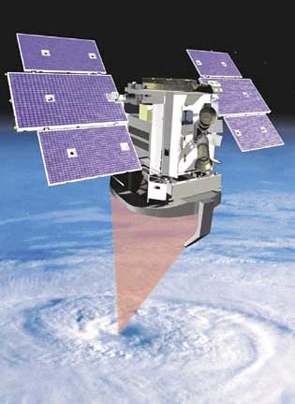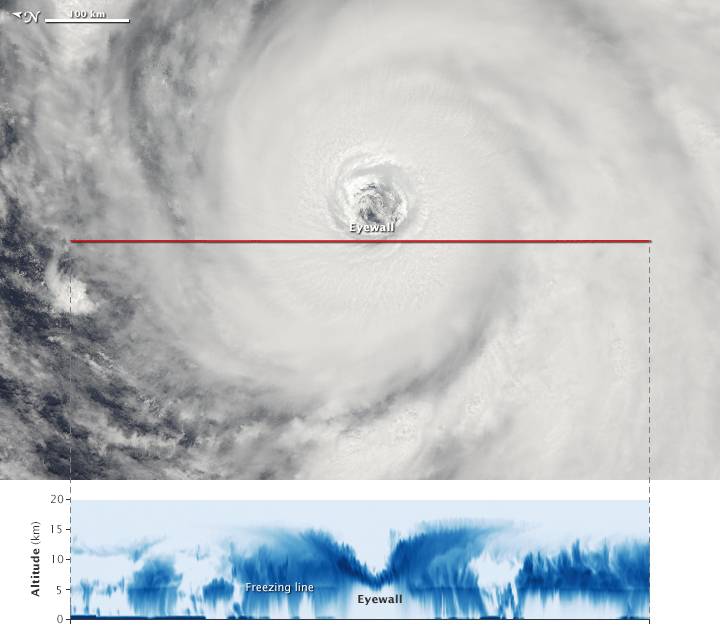The Cloud Profiling Radar (CPR)
The Cloud Profiling Radar (CPR) is a 94-GHz nadir-looking radar which measures the power backscattered by clouds as a function of distance from the radar. The CPR was developed jointly by NASA/JPL and the Canadian Space Agency (CSA). The overall design of the CPR is simple, well understood, and has strong heritage from many cloud radars already in operation in ground-based and airborne applications.The design of the CPR is driven by the science objectives. The original requirements on CPR were:
- sensitivity defined by a minimum detectable reflectivity factor of -30 dBZ,
- along-track sampling of 2 km,
- a dynamic range of 70 dB,
- 500 m vertical resolution and
- calibration accuracy of 1.5 dB.
- The minimum detectable reflectivity factor requirement was reduced to -26 dBZ when the mission was changed to put CloudSat into a higher orbit for formation flying.
 |
| CloudSat | NASA |
While the satellite has collected over 10 million radar profiles since launching in 2006, it is relatively unusual to capture data of a major storm’s eye. Over its lifespan, the satellite has imaged about 1,200 hurricane or typhoon strength tropical cyclones, according to a study published recently in the Bulletin of the American Meteorological Society. Among them, CloudSat has acquired about 30 direct eye overpasses. Scientists are compiling all of the storm overpasses into a database that they are using to better understand the anatomy and behavior of tropical cyclones.

No comments:
Post a Comment